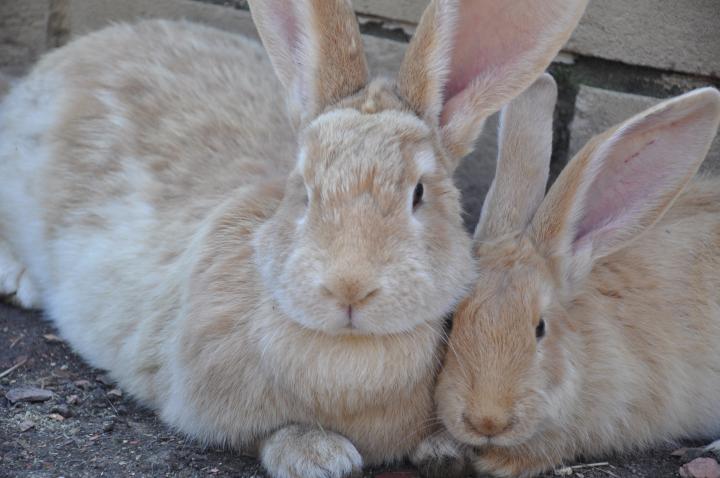Rare giant rabbits at risk of unusual fractures, cases suggest
Giant breed rabbits appear susceptible to an unusual, but recoverable, type of leg break, recent case studies show.
Male, neutered Continental Giant rabbits appear to be predisposed to a rare type of leg fracture – but these can be treated successfully in most cases, although with common complications, vets have found.
The fracture affects the end of the thigh bone where it forms the knee joint with the lower leg.
The underlying reason that predisposes the breed to this type of injury is unclear, experts say.

Lack of injury
Vets at the Dick Vet treated four Continental Giant rabbits for fractures of this type. Three recovered limb function with no reported lameness.
Each of the rabbits had developed the injury without trauma to the affected leg having been witnessed.
Results suggest there may be inherent weakness in the bones, or that fractures are caused by stress, making them more susceptible to the injury.
The study was published in Journal of Small Animal Practice.
This is a very uncommon fracture, yet we saw it only in a less common breed of rabbit. It is important that vets and owners are aware of the apparent increased risk of fractures of this sort in Continental Giant breed rabbits.
Related links
Dick Vet Rabbit and Exotic Practice
About the Royal (Dick) School of Veterinary Studies
The Royal (Dick) School of Veterinary Studies is a one-of-a-kind centre of excellence in clinical activity, teaching and research. Our purpose-built campus, set against the backdrop of the beautiful Pentland Hills Regional Park, is home to more than eight hundred staff and almost fourteen hundred students, all of whom contribute to our exceptional community ethos.
The School comprises:
- The Roslin Institute
- The Global Academy of Agriculture and Food Security
- The Roslin Innovation Centre
- The Hospital for Small Animals
- Equine Veterinary Services
- Farm Animal Services
- Easter Bush Pathology
- The Jeanne Marchig International Centre for Animal Welfare Education
We represent the largest concentration of animal science related expertise in Europe, impacting local, regional, national and international communities in terms of economic growth, the provision of clinical services and the advancement of scientific knowledge.


